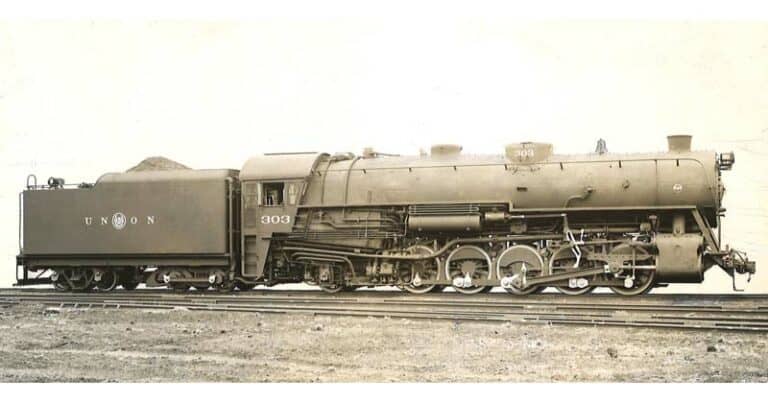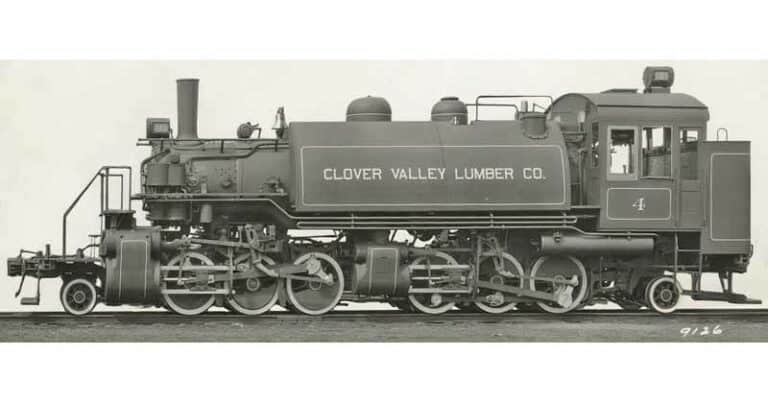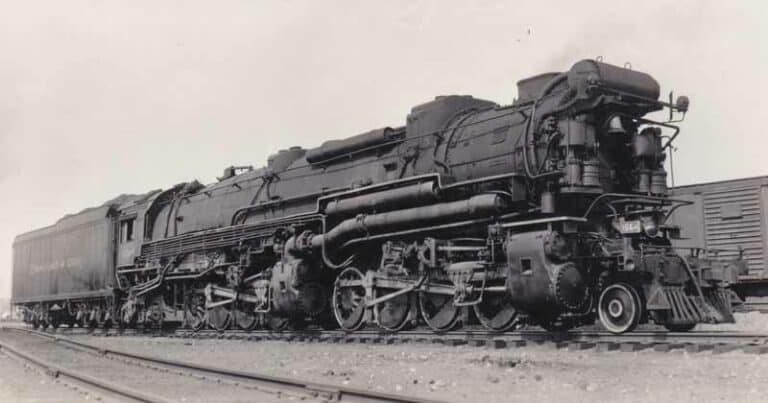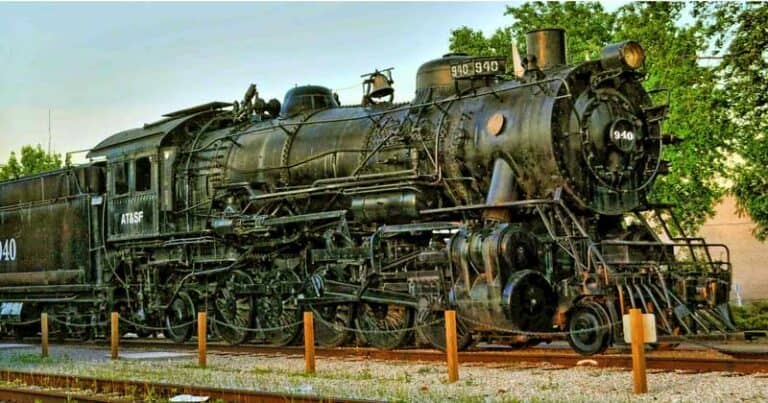2-8-8-4 Yellowstone type
Only four railroads owned locomotives featuring the 2-8-8-4 wheel arrangement. Interestingly the railroad that the 2-8-8-4 is most closely identified with, the Northern Pacific, neither named it nor had the most on its roster. As was traditionally the case, naming rights went to Northern Pacific, since it was the first railroad to order and roster the new wheel arrangement. (See how steam locomotives are classified using the Whyte system).
When the Northern Pacific ordered the 2-8-8-4 in 1928, it was the largest steam locomotive ever built. The NP specified a huge firebox because they had readily access to western “Rosebud” coal. It was accessible and cheap; but it was also low quality. It did not burn efferently – hence the need for the extra large firebox.

How the 2-8-8-4 became a Yellowstone
The American Locomotive Company (ALCo) added the extra trailing wheels to carry the extra weight of the firebox, turning a 2-8-8-2 into the 2-8-8-4. When delivered, the Northern Pacific named this new, largest in the country steam locomotive the “Yellowstone”, after the national park that the railroad served.
Northern Pacific ordered another 11 Yellowstones- this time from locomotive builder Baldwin; but those 12 would be all the NP would roster since they just didn’t generate enough horsepower on the cheap coal that the NP had hoped for.
At this time, each railroad could customer order any wheel arrangement to any design – making every new order a custom job. So when other railroads ordered the 2-8-8-4 wheel arrangement, they made changes that improved upon the Northern Pacific design.
Southern Pacific orders them coming and going
The Southern Pacific used the base Yellowstone design; though with a unique change, as but most were flipped around and operated as “Cab Forward”. This gave crews more fresh air in the many tunnels in the Sierra Range. So a 2-8-8-4 became a 4-8-8-2 – a backwards Yellowstone, or truthfully, no longer a Yellowstone. You can read all about Cab Forwards in our article on these strange and wonderful only-on-the-SP locomotives.
However, since the entire Southern Pacific was not dotted with tunnels, it wasn’t necessary for all of these locomotives to be Cab Forwards. SP’s Class AC-9 were true 2-8-8-4, standard, Yellowstone locomotives. Lima Locomotive Works built 12 for the SP in 1939. They were put to work on the Sunset Route, in Arizona, New Mexico and Texas. As powerful pullers, they mostly headed freight trains until scrapped in 1956.

Baltimore & Ohio became believers
During World War II, the Baltimore & Ohio didn’t want any Yellowstones for their fleet. They wanted diesel locomotives. They had no choice. They needed locomotives and it was 1944. We were fighting World War II in Europe and the Pacific, and the Government’s War Production Board controlled all production in the country.
The B&O realized that they had two choices: they could have 30 2-8-8-4 Yellowstone steam locomotives from the Baldwin Locomotive Works, right on the B&O mainline, or it could have nothing. The B&O’s first Yellowstones were delivered in 1944 with the last batch delivered in 1945. They were designated as Class EM-1.
Thye B&O may have wanted diesels, but at least they got the most modern steam locomotives being built. B&O president Roy White, inspecting the first one delivered, turned to General Superintendent of Motive Power, A.K. Galloway, and said, “Well, I must say, they have everything!”. Indeed they did, including roller bearings on all axles – even tender axles.

The EM-1 was a good performer; and fans of the B&O loved seeing these huge machines swing over the track as it worked tight curves on parts of the system. But the B&O had been right to want diesels; and all EM-1 2-8-8-4 Yellowstone locomotives were retired by 1960 – making for a short 15 year career.
Duluth, where Yellowstone earned her stripes
Though B&O fans might argue, as the EM-1 is an impressive locomotive, most would agree that the Duluth, Missabe and Iron Range (DM&IR) is the railroad that made the Yellowstone’s reputation. The DM&IR ordered eight 2-8-8-4 locomotives in 1941 with specs that made these the most powerful Yellowstones built for any railroad. This first batch of eight made up the Class M-3.
The DM&IR was a small railroad with a big job. Never operating on more than 600 miles of track, and much of that branch lines to various iron ore mines, the DM&IR carried heavy iron ore, and later taconite, from inland mines to Lake Superior docks. From there lake freighters took the iron ore and taconite to steel mills.

With steel, and therefore iron ore, in high demand during World War II, the War Production Board authorized another ten Yellowstones for the railroad in 1943. These became the M-4 Class. The 18 Missabe Road (as the railroad was called at the time) Yellowstones were numbered 220 to 237.
In addition to the heavy, generally 115 car, iron ore trains run by the DM&IR, the ruling grade on the railroad was the hill between Duluth and the main yard at Proctor. This grade was 2.2%. Heavy iron ore cars facing the downgrade to the ore docks were not much of a problem, but hauling empties upgrade to Proctor gave even the Yellowstones quite a workout.
The DM&IR only retired the Yellowstones after diesels came on property and proved they could handle the job. Only one of the 18 was retired before dieselization: #237, which was sold for scrap after a wreck. The others were retired between 1957 and 1963.
Survivors?
Thankfully, yes. Despite only having 72 of these might 2-8-8-4 Mallet articulated Yellowstone locomotives spread among just 4 railroads, there are 3 survivors, all of which remain from the Duluth, Missabe and Iron Range Railway. All are on static display in or near Duluth in Minnesota.



It is unlikely that any of these Yellowstones will ever run again. If someone with a bucket load of money came along, the word is that 227 at the Lake Superior Railroad Museum in Duluth was well take care of by DM&IR shop crews between her retirement in 1959 and her donation to the museum. 227 was kept in the roundhouse at Proctor all that time, and now spends all her time inside the museum.
In fact, the museum’s display allows visitors to push a button and watch as the wheels on 227 turn over. Seeing those 2-8-8-4 sets turn is marvelous (I’ve seen it!). Clearly the wheels, rods and linkages are not frozen up. If those wheels can turn….hmmm…A person can dream!

Railfan and model railroader. Writer and consumer of railroad news and information.







